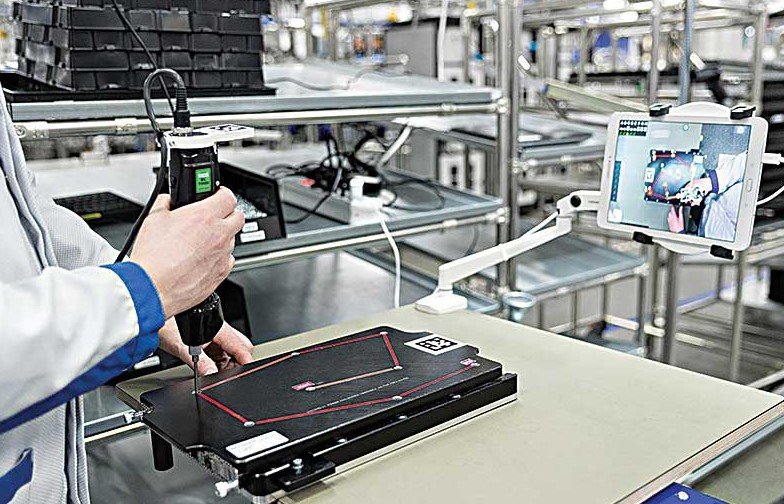Swedish telecom giant Ericsson is making fresh moves in Canada, teaming up with Bell and Rogers to push the boundaries of 5G — not just faster, but smarter, and finally, more usable indoors.
Bell wants to fix what most urban Canadians already know too well: 5G signal can be a pain indoors. Meanwhile, Rogers is sharpening its focus on smart devices and the Internet of Things. And Ericsson? They’re right in the middle, cashing in on both fronts with its newly developed tech straight from its Ottawa lab.
Bell Takes the Lead on Indoor 5G With a Plug-and-Play Solution
Ever walked into a coffee shop or a movie theatre and suddenly watched your phone speed drop from 5G to crawling 4G — or worse? That’s exactly the problem Bell and Ericsson want to solve with a new gadget called the Indoor Fusion 8828.
Built in Ottawa, this isn’t your average telecom hardware. It’s compact, it’s easy to install, and it’s designed for smaller businesses that don’t need industrial-scale solutions but still want consistent, fast 5G. Places like chain restaurants, gyms, or mid-sized stores can now keep customers and operations online without a hitch.
This isn’t some futuristic concept either. Bell is already rolling it out.
One company spokesperson put it simply: “If you can plug in a coffee machine, you can set this up.”
The Fusion 8828 supports up to four “Radio Dots” — basically small 5G signal boosters — and offers multi-gigabit speeds. It’s designed to fill in those signal dead zones where big outdoor towers can’t penetrate.
Rogers Focuses on Smart Devices with Its 5G Advanced Rollout
While Bell is fixing indoor connectivity, Rogers is getting ready for the next wave of internet-connected gadgets.
Enter 5G Advanced, a major upgrade to the network’s backbone, built for the growing crowd of devices like smartwatches, security cameras, traffic sensors, and other gear that doesn’t need a firehose of data — just stable, low-energy connections.

At the heart of this is something called RedCap, short for Reduced Capability. And no, that’s not a bad thing. It’s actually a smart trade-off — by toning down the demands on bandwidth and processing, devices last longer on a single battery charge and don’t hog network resources.
This will be particularly helpful for businesses and cities setting up remote sensors and devices that can run for months or even years without needing human interference.
Here’s what Rogers highlighted in its press release:
-
Improved efficiency for low-data devices like smart tags and trackers
-
Better battery life on wearables like smartwatches
-
Enhanced support for industrial monitoring equipment
Basically, it’s about squeezing more out of the network without overloading it.
Why Indoor 5G Matters More Than You Might Think
Let’s be real — outdoor 5G is great for marketing, but it’s indoors where people actually spend most of their time.
And it turns out, traditional 5G towers just aren’t great at penetrating walls, especially in concrete-heavy buildings. That’s left tons of frustration for users who see “5G” on their screen but get performance that feels stuck in the 2010s.
That’s where Ericsson’s new device fits in — a way to finally get strong signal into the places people actually use their phones.
It’s not just about streaming videos or browsing. Think about payment terminals that fail mid-transaction, security systems that drop signal, or delivery workers trying to scan a QR code in a basement food court. This tech makes those problems go away.
One line from Ericsson’s pitch stood out: “Reliable 5G in places where Wi-Fi fails or isn’t feasible.”
The Ottawa Connection: Ericsson Doubles Down on Canadian R&D
This isn’t just plug-and-play marketing fluff. The Indoor Fusion 8828 was born in Ottawa — a sign that Ericsson is taking its Canadian investments seriously.
Canada might not be the biggest 5G market globally, but it’s a proving ground for tech companies. Dense urban cores, varied climates, and high consumer expectations make it a great place to test and refine network tools.
Ericsson’s Ottawa labs have been quietly growing. And this launch puts a spotlight on what’s coming out of that ecosystem.
Here’s a breakdown of the core specs for the Fusion 8828:
| Feature | Details |
|---|---|
| Name | Indoor Fusion 8828 |
| Max Radio Dots | 4 |
| Coverage Area | Small to mid-sized commercial spaces |
| Speed | Multi-Gigabit |
| Installation | Plug-and-Play |
| Target Use | Retail, restaurants, offices, small venues |
That’s a pretty solid offering for a product aimed at “everyday businesses.”
Bigger Picture: Canada as a Testbed for Next-Gen Connectivity
The timing of these launches matters. With global telecom giants looking to expand their 5G reach, Canada is turning into a hotbed of experimentation.
Ericsson is clearly doubling down. Both Bell and Rogers, the country’s two largest carriers, are backing their tech this week — a pretty solid vote of confidence.
5G has been a buzzword for years now. But real-world use cases like indoor connectivity and IoT readiness are what will actually make it meaningful. And as that evolves, so do the partnerships behind it.
It’s early days, but this week’s moves signal a shift — away from hype and toward practical, deployable solutions that actually work for businesses and users alike.








